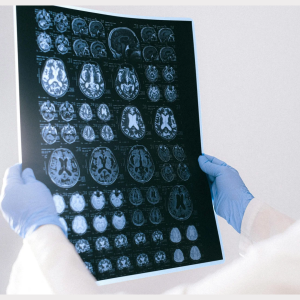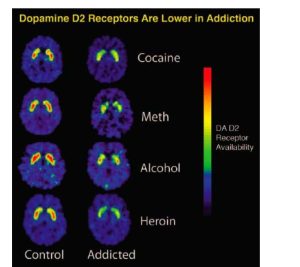Understanding the Impact of Addiction on the Brain
Understanding the Impact of Addiction on the Brain
Have you ever thought about why individuals grappling with behavioural or substance addictions find it so challenging to change their lifestyles? It’s a question that opens the door to understanding the complexities of human nature and the struggles many face on their journey to recovery.
Addiction is a complex neurological condition that affects the brain’s structure and function. To grasp the full scope of this issue, it’s essential to understand how addiction operates neurologically, particularly regarding dopamine pathways and the brain’s reward system.

The Brain’s Reward System
At the core of addiction lies the brain’s reward system, which is designed to reinforce behaviours that are essential for survival, such as eating, socializing, and reproduction. This system relies heavily on a neurotransmitter called dopamine. When we engage in pleasurable activities, dopamine is released, signalling pleasure and encouraging us to repeat those activities.
In a typical scenario, the brain releases dopamine to reinforce positive experiences. This release creates enjoyment and satisfaction, which can lead to repeated behaviours. However, addictive substances and behaviours artificially manipulate this system, leading to an imbalance that can result in compulsive actions.
How Addiction Alters Dopamine Pathways
Addictive substances such as drugs, alcohol, and even certain behaviours like gambling trigger a surge of dopamine much greater than what is experienced through natural rewards. Here’s how this process unfolds:
1. Overstimulation: Substances like cocaine and methamphetamine flood the brain with dopamine, causing an euphoric high. This overstimulation is much stronger than the natural highs of activities such as eating or exercising.
2. Neuroadaptation: The brain adapts to the high dopamine levels over time. Neuroadaptation can manifest in several ways, most notably through the downregulation of dopamine receptors. This process involves a decrease in the number of available receptors on the surface of neurons that respond to dopamine, leading to diminished sensitivity to the neurotransmitter. Additionally, the brain reduces its overall production of dopamine to counterbalance the excess. As a result, individuals will find that they experience a decreased responsiveness to stimuli that once brought pleasure or motivation, leading to potential challenges in mood regulation and reward processing; often resulting in increased substance use to achieve the same level of pleasure.

3. Withdrawal and Craving: When the substance is no longer present, the individual may experience withdrawal symptoms. Because the brain’s natural reward system has been altered, ordinary pleasures now seem dull or unfulfilling. This may lead to intense cravings for the addictive substance or behaviour to restore that feeling of pleasure.
4. Compulsive Behaviour: Alterations in dopamine pathways can result in compulsive behaviour. Even in the face of negative consequences, individuals may continue to seek out the substance or behaviour due to the overwhelming desire for the dopamine high and relief from withdrawal symptoms.
The Cycle of Addiction
This cycle of reward, adaptation, and compulsion can make breaking free from addiction incredibly challenging. What starts as occasional use can rapidly escalate into dependency, as the brain’s pathways become wired for the substance rather than for natural rewards.
Understanding how addiction affects the brain through its dopamine pathways and the reward system is essential for creating effective treatment strategies. Recovery often involves not just the cessation of use but also rebuilding the brain’s reward system to find pleasure in everyday life without the need for substances. This highlights the importance of seeking help and support, as many individuals can reclaim their lives and restore balance through recovery programs and therapy.
By raising awareness about the neurological underpinnings of addiction, we can foster empathy and understanding for those who struggle with this condition and encourage a more supportive approach to treatment and prevention.
References
Volkow, N. D., Wang, G. J., Fowler, J. S., & Tomasi, D. (2011). Addiction: Beyond dopamine reward circuitry. Proceedings of the National Academy of Sciences, 107(30), 15069-15074.
Sinha, R. (2007). The role of stress in addiction relapse. Clinical Psychology Review, 27(2), 188-203.
Kalivas, P. W., & Volkow, N. D. (2005). The neural basis of addiction: A pathology of motivation and choice. American Journal of Psychiatry, 162(8), 1403-1413.
Nestler, E. J. (2004). Molecular mechanisms of drug addiction. Neuropharmacology, 47(Suppl 1), 24-32.
Heilig, M., & Egli, M. (2006). Pharmacological strategies to treat alcohol addiction. Nature Reviews Drug Discovery, 5(1), 37-54.
